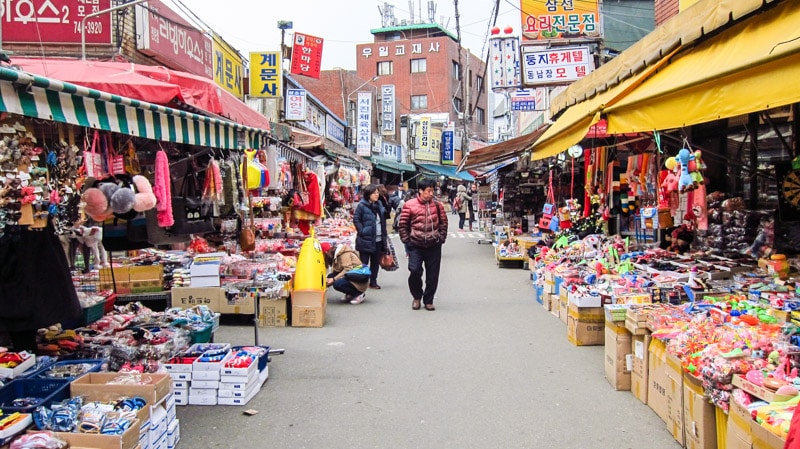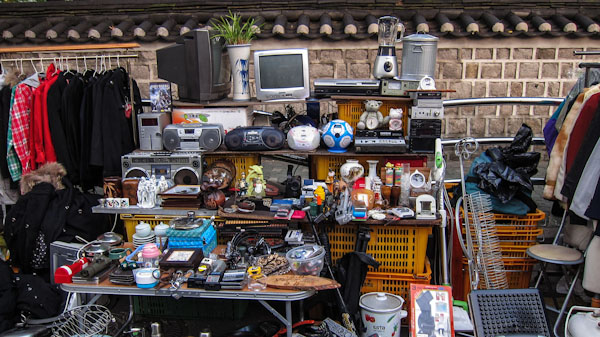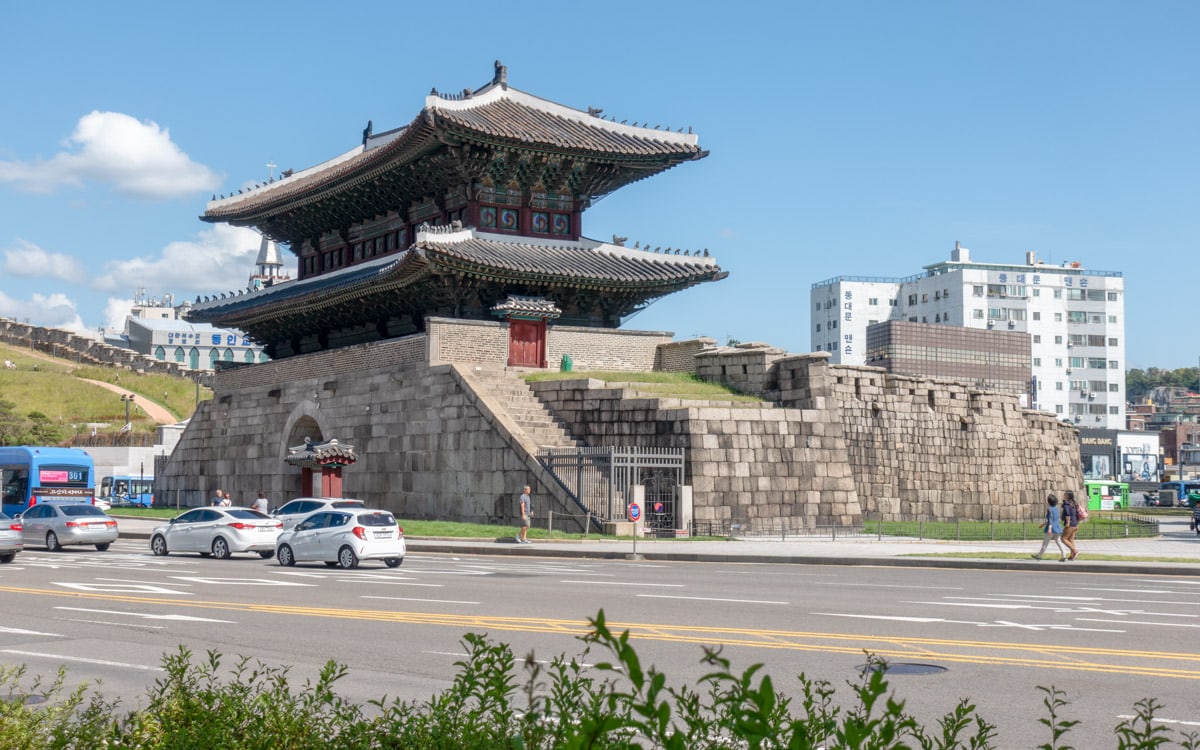
Heunginjimun Gate (Dongdaemun Gate), the historic Great East Gate on the Seoul Fortress Wall, dates back to the beginning of the Joseon Dynasty in 1398. Heunginjimun is now the oldest main gate remaining in Seoul after Sungnyemun Gate (Namdaemun Gate) was destroyed by a fire on February 10, 2008.
The gate was originally built in 1396 during the reign 4th year of the reign of King Taejo. King Danjong renovated it in 1453. It was last rebuilt by King Gojong in 1869.
in 1869, there were four large gates and four small gates found along the fortress wall. These gates were built in the north, south, east, and west sections to protect the city from enemies, both human and animal.
Each large gate had a tablet inscribed with letters that stood perfect virtue, justice, civility, and wisdom. The letter “ji” on the tablet Heunginjimun (Dongdaemun) was meant to reinforce the energy of the land in front of the gate.
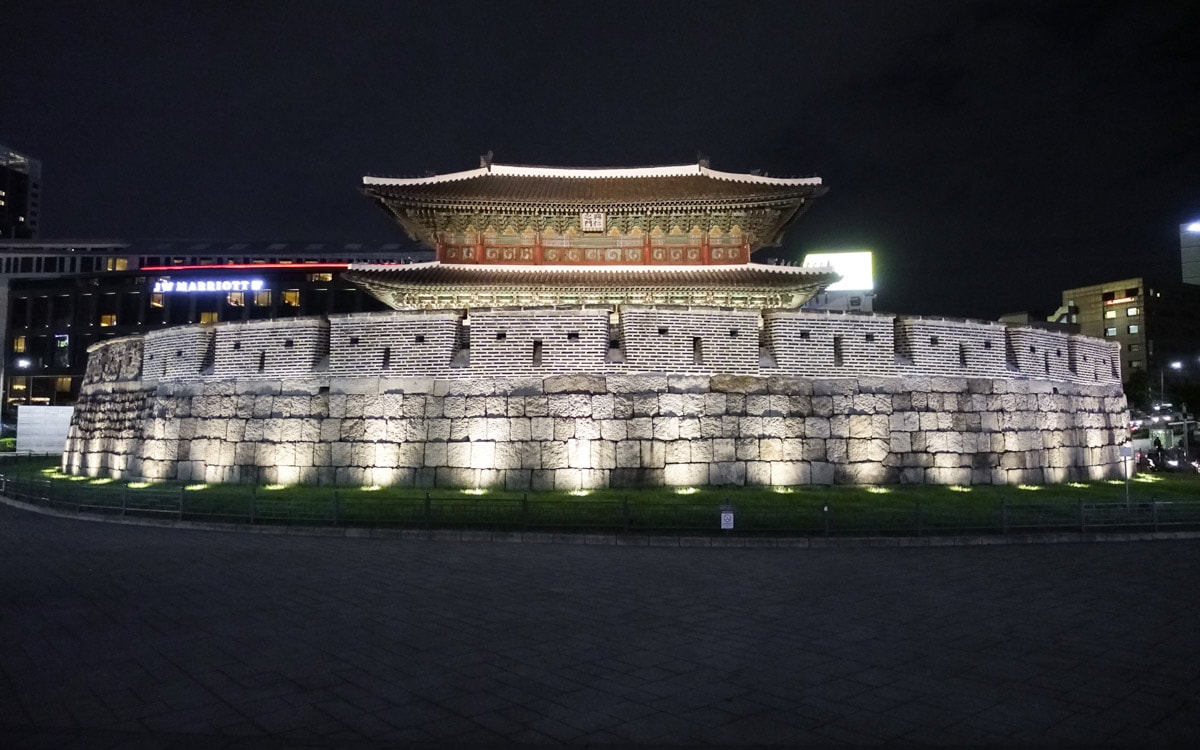
An arched passageway allowed people to pass through the gate and to the other side of the fortress wall.
A two story gatehouse was built for added protection. This feature is also found at Sungnyemun (Namdaemun). The gatehouse was always guarded by a commander. During times of emergency, the gatehouse was used as a command post.
An outer wall built of bricks and windows protected with wood plates were specifically built for the purpose of keeping out invaders.
The middle floor features five front sections and two side sections. Japsang statues of animals, which keep away evil spirits, can be seen on the eaves of the Ujingak style roof.
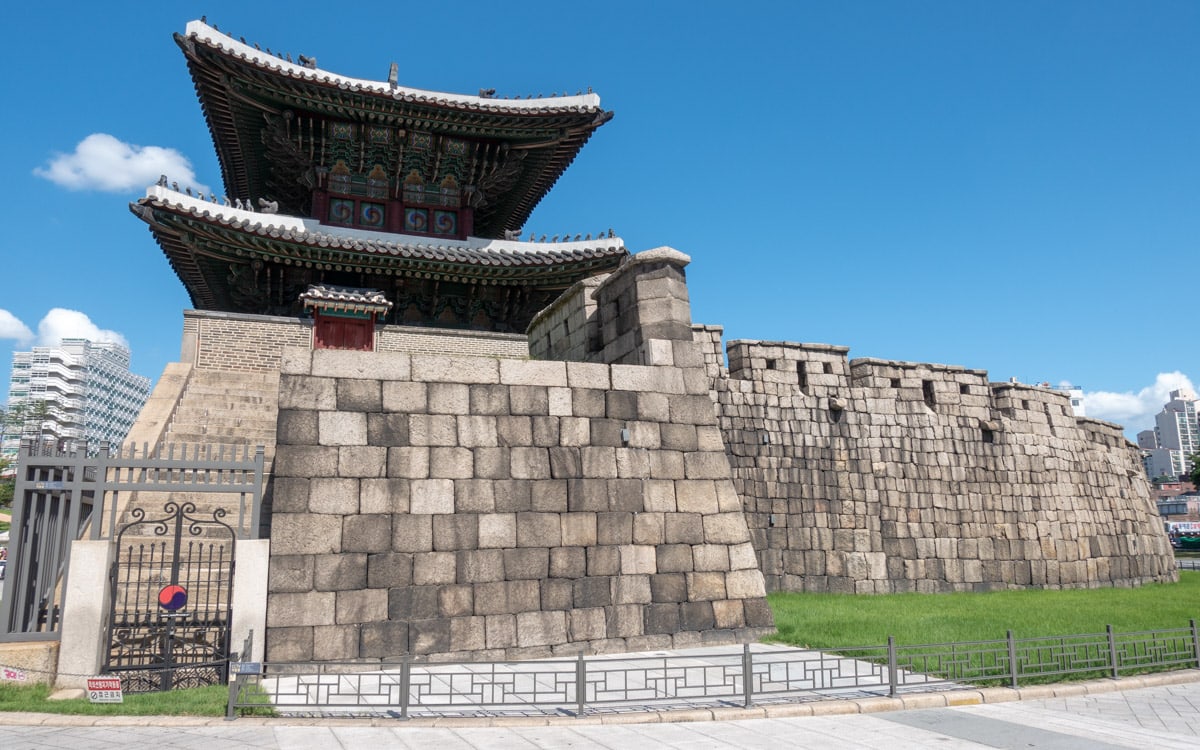
Though more commonly known as Dongdaemun, during the reign of King Sejo (1455–1468), many people started calling it Heunginjimun. To this day, many call it by that name to preserve its history.
The simple structure of the gatehouse and the various decorations are a great example of architecture style during the late 19th century Joseon Dynasty.
Heunginjimun Gate (Dongdaemun Gate) Information
Hours
24 hours
Admission
Free
How to Get Here
Take Subway Line 1 or Line 6 to Dongdaemun Station (Exit 6).
Heunginjimun Gate (Dongdaemun Gate) Video
Map
Additional Resources
Viator by TripAdvisor
Viator is a popular online platform that helps travelers book tours, activities, and unique experiences worldwide, including in Seoul. It connects users with a wide selection of options – from sightseeing tours to cultural events and outdoor adventures – all offered by local providers.
Klook
Klook offers discounted tickets and reservations for various attractions and services in Seoul, from theme parks and museums to tours and transportation options.
Rakuten
Save money while exploring Seoul with Rakuten's cashback program. Book your hotels or other services through Rakuten and enjoy cashback rewards and exclusive deals.
If you sign up using the link below, you could earn $30 cashback on your first purchase over $30.
Book Recommendations
For an immersive guide to Seoul, many travelers choose to bring a book along. Fodor's Seoul, for example, offers detailed recommendations on sights, restaurants, maps, and travel tips.
Nearby Sights
Dongdaemun Market
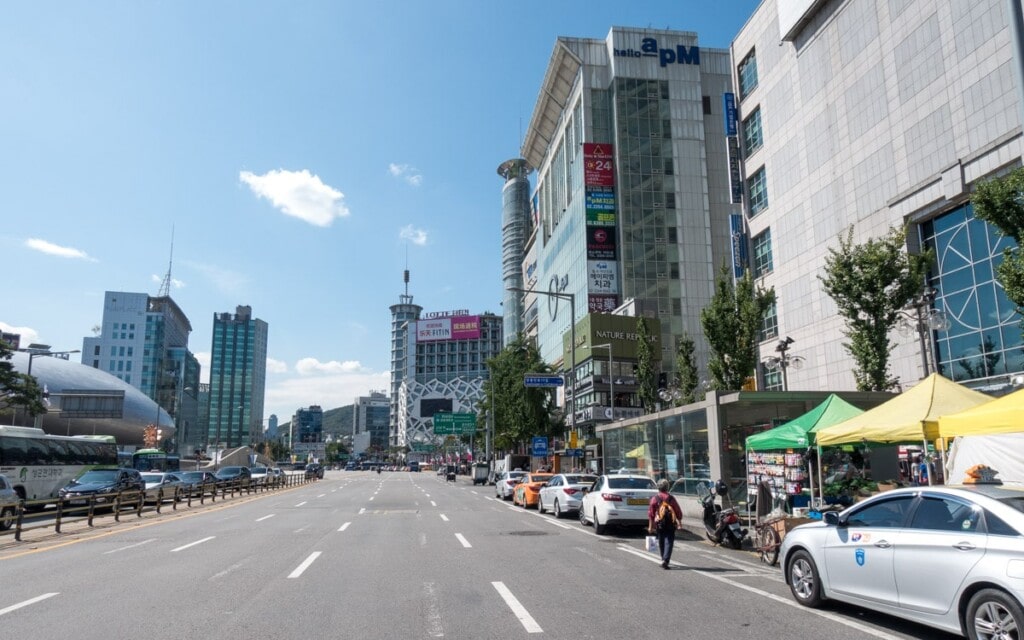
The best time to visit is at night, especially on the weekends, when it is most crowded and alive. Learn to bargain. Usually you can haggle down the price of an item by 20%. Shopping here is 24/7 but many shops are closed on Mondays. Dongdaemun Market is a large commercial district consisting of over 20 shopping malls and traditional markets, 30,000 shops, 50,000 manufacturers.
Gwangjang Market
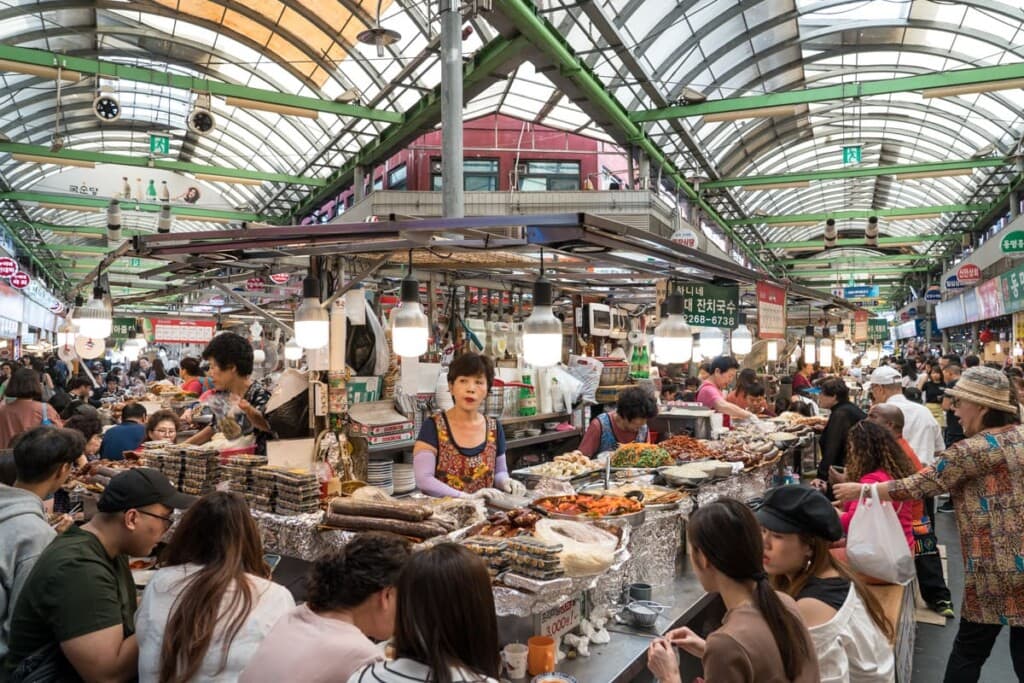
Gwangjang Market, one of the oldest traditional markets in Seoul, is popular with foreign visitors looking to sample some of the best Korean street foods. If you are looking for an authentic Korean cultural experience, along with some of the best bindaetteok in the city, then look no further. The market, first established in 1905, is today the oldest remaining daily market in Korea.
Gwanghuimun Gate
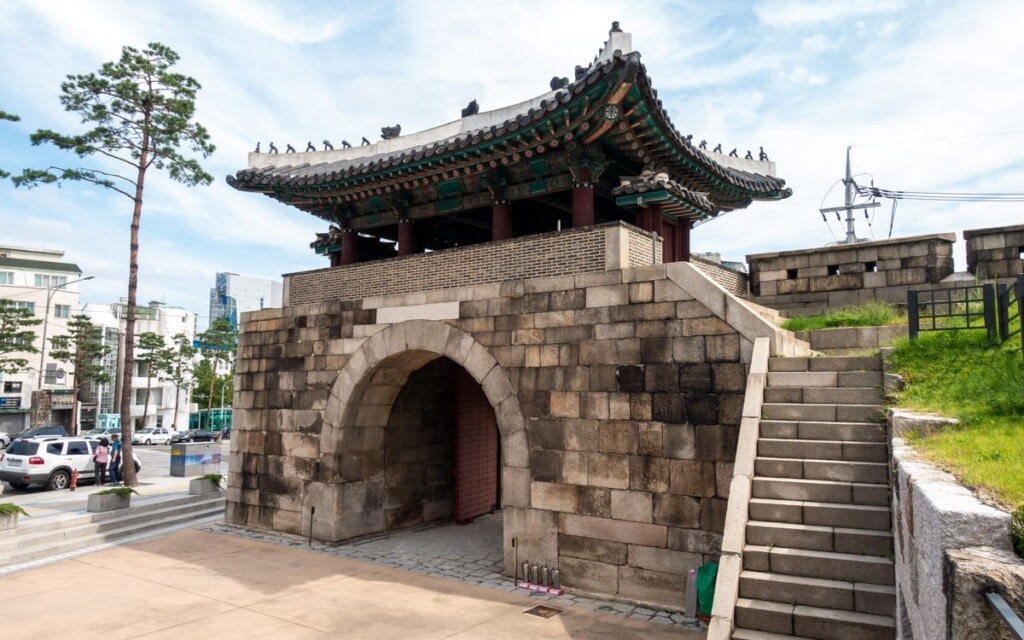
Gwanghuimun Gate, literally meaning "Bright Light Gate," is one of eight gates found on the fortress wall that surrounds the city of Seoul. Gwanghuimun is one of four small gates located along the southeast area of the fortress wall. In 1396, a gate was built at this location, which was located in the southeastern corner of the walled city.
Last Updated on Oct 21, 2023
